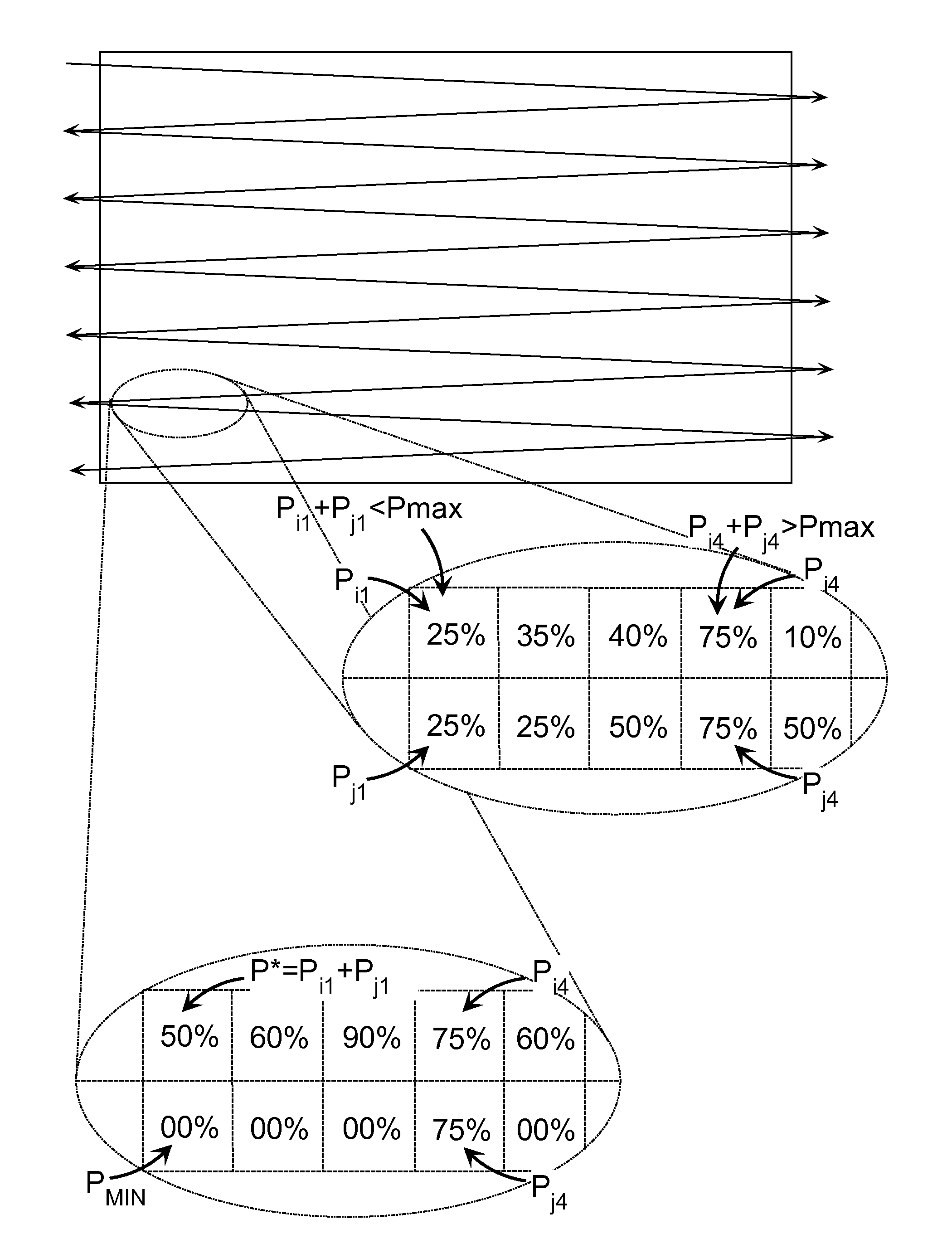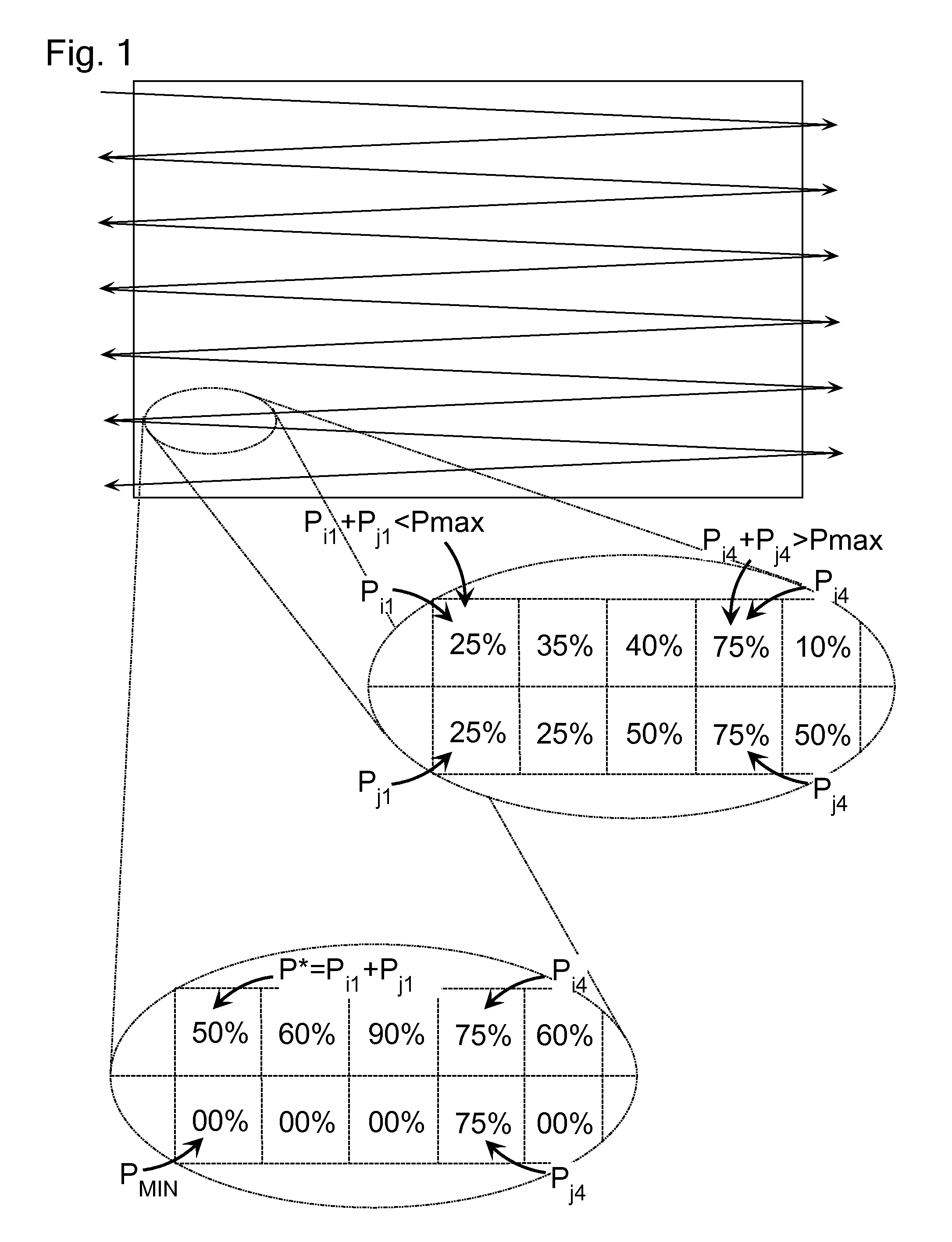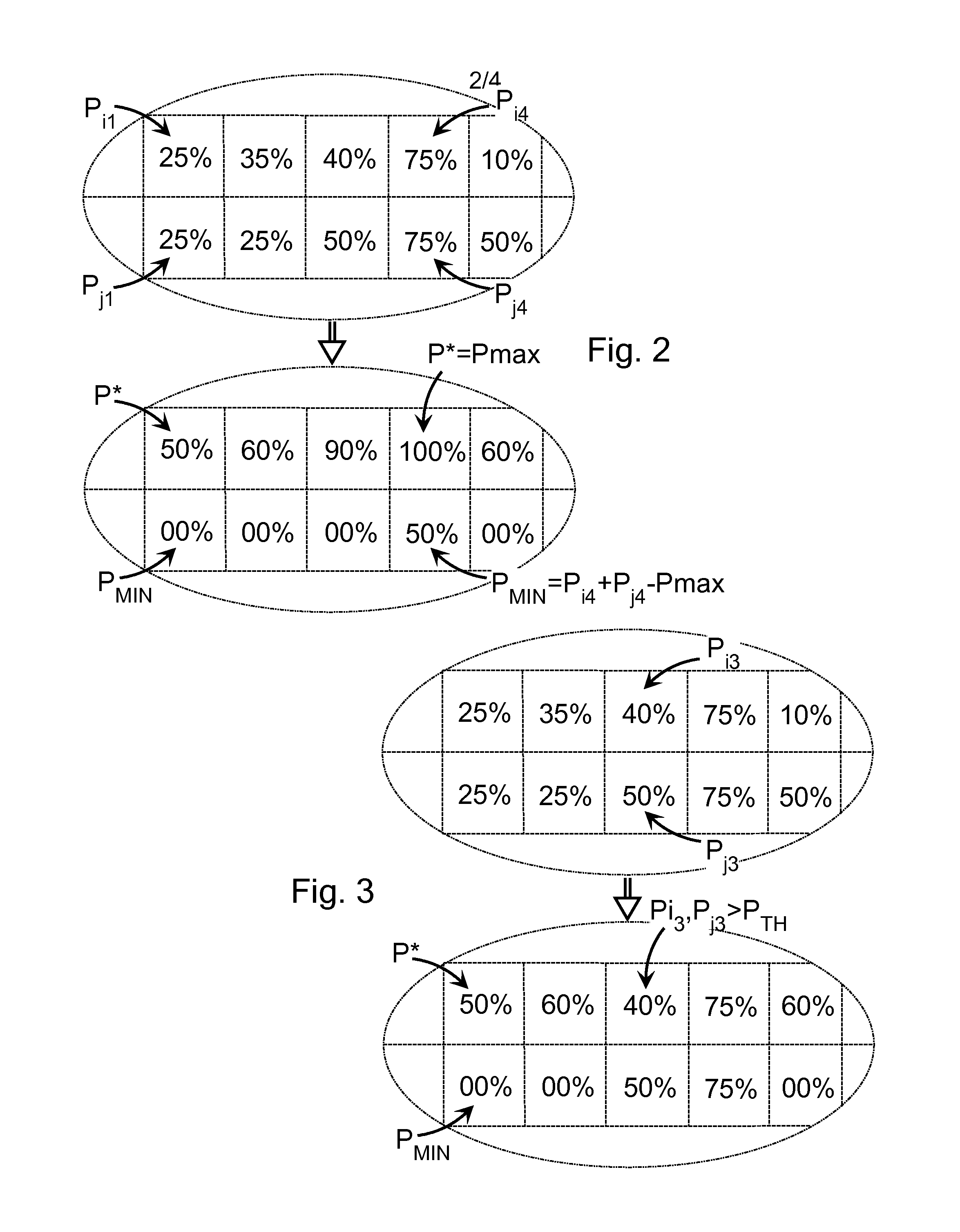Energy Transfer In Scanning Laser Projectors
a laser projector and laser scanning technology, applied in projectors, color television details, instruments, etc., can solve the problems of affecting efficiency, laser diode driving, and characterized lasers with relatively low operating efficiency, and achieve the effect of maximizing the intensity of the fundamental signal
- Summary
- Abstract
- Description
- Claims
- Application Information
AI Technical Summary
Benefits of technology
Problems solved by technology
Method used
Image
Examples
Embodiment Construction
[0016]FIG. 1 illustrates a method of operating a laser scanning projector where intra-frame energy transfer is employed to optimize operational efficiency in the projector. Generally, as will be appreciated by those familiar with laser scanning projectors, a semiconductor laser and associated scanning optics can be configured to scan a projected laser beam through a 2D array of image pixels of successive image frames. In order to avoid complexity, we will consider here only one single color. However, it should be understood that, when multiple lasers are being used to create different colors, the algorithm can be applied to any or all colors forming the projected image. According to the method illustrated in FIG. 1, desired intensity values P are identified for a group of neighboring pixels in the 2D array of image pixels. The neighboring pixels, which may comprise a simple, directly adjacent pair of pixels or a more complex group of neighboring pixels that are not directly adjacent...
PUM
 Login to View More
Login to View More Abstract
Description
Claims
Application Information
 Login to View More
Login to View More - R&D
- Intellectual Property
- Life Sciences
- Materials
- Tech Scout
- Unparalleled Data Quality
- Higher Quality Content
- 60% Fewer Hallucinations
Browse by: Latest US Patents, China's latest patents, Technical Efficacy Thesaurus, Application Domain, Technology Topic, Popular Technical Reports.
© 2025 PatSnap. All rights reserved.Legal|Privacy policy|Modern Slavery Act Transparency Statement|Sitemap|About US| Contact US: help@patsnap.com



